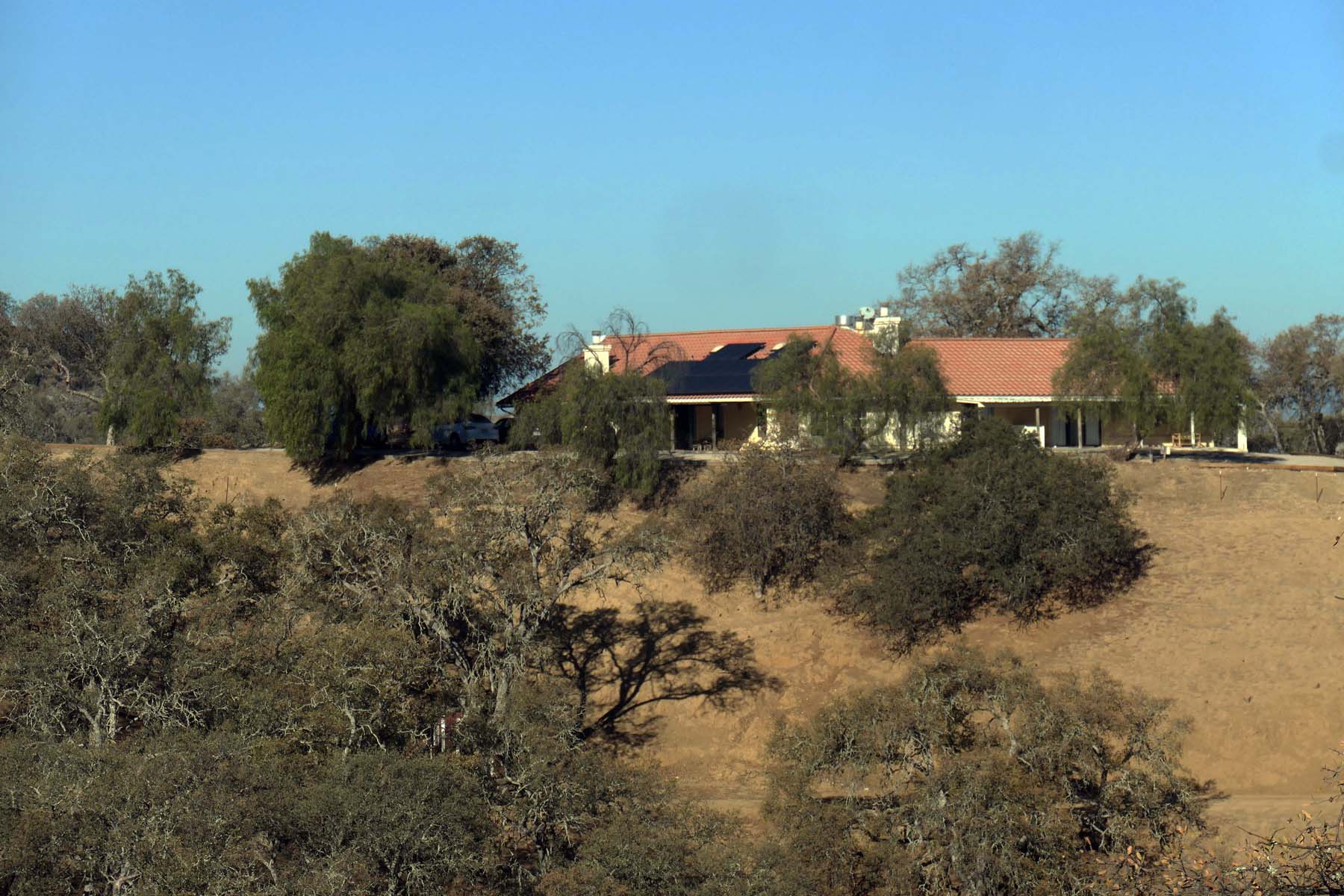Leave it to my boys to find a place that combines (almost) all of their mother’s delights: Nature! Daily Wildlife! Hiking opportunities! Graffiti! Hidden Gems! And, of course, birds!


We woke up on Thanksgiving morning to the most beautiful of sunrises, and a path along several farm buildings leading to chickens and goats.



Tired guardians did not so much as blink when we walked by them.

Neither did Elvis.

*




*

Note the little Manga figure on top of the spider…
The goats were roaming, free to come and go with an open pen, grazing in the oak woodland, trees covered with Spanish Moss.







The views, once you climbed a bit, were spectacular.


Right: Satellite Communication Station at Camp Roberts, CA.
These views were outdone by those on the one long hike we took: adjacent to Lake San Antonio, with oak woodlands and oak savannah. It is a man-made lake, formed by a dam on the San Antonio river, erected in 1965 to provide more ground water. Without the lake, the river would be nearly dry in the summer months, so not much water can seep into the ground. However, with the ongoing drought the lake is now down to about 7% of its intended volume.










Plenty of wildlife around still, some, like a huge hare and a herd of mule deer, evading photographic capture. But the deer and the birds obliged.



The most interesting birds around were the Acorn Woodpeckers. They live in extended kinship groups called “bushels,” with three females and up to eight males breeding together, one or two generations of their offspring staying with the clan to raise the next generation. All of their eggs are incubated and fed in the same nest.



These birds don’t need to migrate in the winter (and thus no need for them to fatten up) because they are the greatest hoarders of all times. They drill holes into dead trees or any available wood structures, from fence posts to the eves of roofs, and store acorns in fall to be ready for feeding in winter. They tend to these “granaries” or “pantries” as well. When acorns shrink after prolonged storage they are carefully repositioned in smaller holes, custom made. Single trees are used for generations and can be riddled with up to 50.000 holes!







They are a noisy bunch, with squeaky chatter filling the air around the woodlands, just lifting your soul. They also use drumming on dead limbs, chosen for their resonance, as a song, with spacing of the drumming sounds marking territory. Really a fascinating species.
Here they are in action:
A Cornell University and UCal study of their behavior, ongoing for the last 45 years and observing over 6000 banded birds (including DN analyses of late) and 2000 nests, has asked some important questions about the evolutionary benefits of cooperation. The communal breeding and tending to the granaries – noticed already in 1925 by a guy named Leach who wrote about communism in woodpeckers –

is rare in birds, but makes perfect evolutionary sense for this species that depends on food that is not available year round and requires enormous labor to be stored for the winter. It takes huge amounts of time and effort to construct, maintain and defend granaries. Each hole takes an average of 20 minutes to drill, and is painstakingly sculpted to hold a particular acorn. If the approximately 30% of offspring that now tend to their younger siblings (thus not breeding themselves) were to leave their clan they would have to start a whole new pantry instead of being fed by the existing ones. Since they share many of the genes of their younger siblings, gene survival – the evolutionary goal – is overall more likely.
They flourish most when the oak woodlands have a variety of oak species, so if one gets hit by disease or other stressors, there are many food sources left – and so it was in this area in Monterey County. However, the drought is now affecting large swaths of California woodlands and the acorn woodpeckers are moving north, to Oregon as well. Drought is not the only threat. Habitat loss and degradation, overgrazing, poor regeneration of oaks in California, and destruction of oak and pine forests for firewood or development are among the biggest threats facing the species.
But who wants to think dire thoughts on a perfect Thanksgiving day? Not this grateful hiker….

and that was even before the pies, made by the kids, came out to the table….


Music today is a Feinberg Sonata that reminded me of the fluttering about of these bushels of woodpeckers.







Sara Lee Silberman
LOVED the photos! And the youtube of the Acorn Woodpeckers!
The pies looked glorious, and I assume tasted that way as well….
Louise A Palermo
I am SO THANKFUL for this walk along with you. I love acorn woodpeckers and this brought back beautiful memories of when my kids and I did a census on snags and the wildlife that required them. What a gorgeous hike, and even more gorgeous hikers. So much beauty in one post!!
Deb Meyer
All the pictures look wonderful! So glad you got to spend some quality time with your family!!
Anita Helle
Thank you for these gorgeous photographs of Monterey County! I especially loved the one with the roots of trees visible down a long cliff
(or wall? ravine?), a deep structural take appropriate to the commentary.
–Anita
Bonnie Meltzer
50 years ago when I was a high school art teacher one of my students gave me a treasured present, a piece of wood that looked like that woodpecker pantry. Unfortunately, it didn’t get across the country with me. I haven’t thought about it for years, decades.